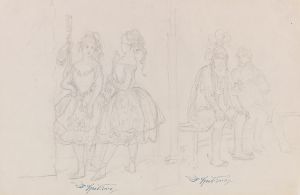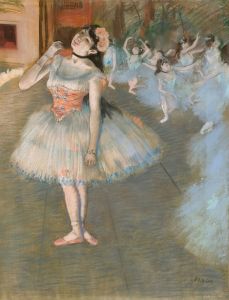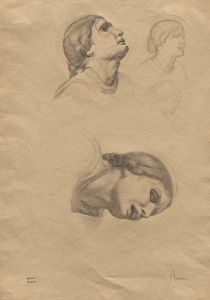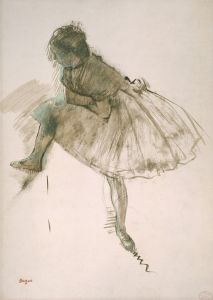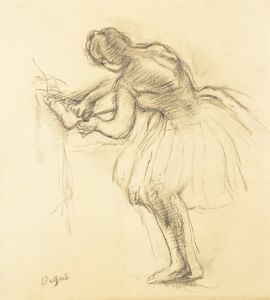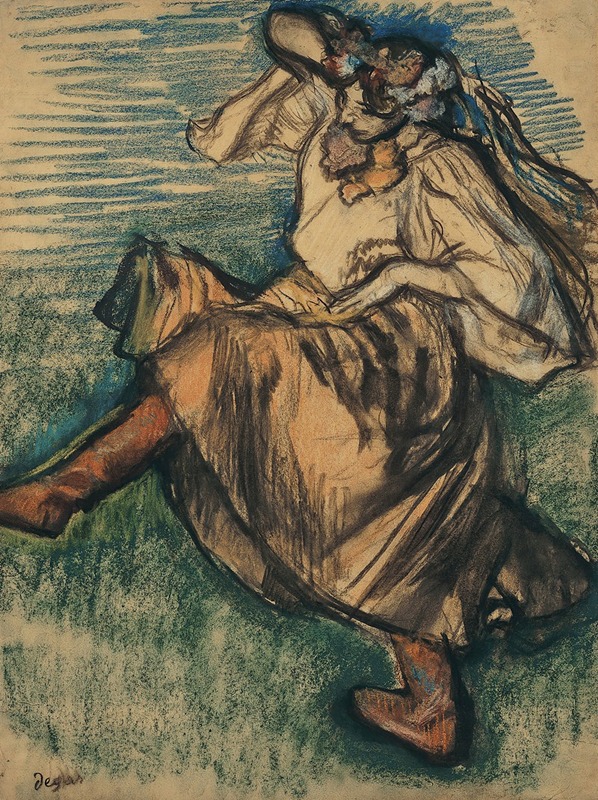
Russian Dancer
A hand-painted replica of Edgar Degas’s masterpiece Russian Dancer, meticulously crafted by professional artists to capture the true essence of the original. Each piece is created with museum-quality canvas and rare mineral pigments, carefully painted by experienced artists with delicate brushstrokes and rich, layered colors to perfectly recreate the texture of the original artwork. Unlike machine-printed reproductions, this hand-painted version brings the painting to life, infused with the artist’s emotions and skill in every stroke. Whether for personal collection or home decoration, it instantly elevates the artistic atmosphere of any space.
"Russian Dancer" is a pastel artwork created by the French Impressionist artist Edgar Degas. The piece is believed to have been completed in the late 19th or early 20th century, during a period when Degas was particularly interested in capturing the movement and vitality of dancers. Known for his fascination with ballet and theatrical performances, Degas frequently depicted dancers in his works, but "Russian Dancer" stands out for its focus on a folk dancer rather than a classical ballerina.
The artwork portrays a female dancer in traditional Russian attire, characterized by vibrant colors and dynamic movement. The dancer's pose and flowing costume suggest the energy and rhythm of a folk dance, contrasting with the more restrained elegance of ballet, which dominates much of Degas's oeuvre. The use of pastel in this piece highlights Degas's mastery of the medium, allowing him to create rich textures and vivid hues that bring the dancer to life.
Degas's interest in Russian dancers may have been influenced by the growing popularity of Russian culture in Paris during his lifetime. The late 19th century saw an increased fascination with Russian art, music, and dance in Western Europe, partly due to the tours of Russian performers. However, specific details about the identity of the dancer or the exact inspiration for this work remain unknown.
"Russian Dancer" is part of a series of works by Degas that depict similar subjects, showcasing his ability to capture fleeting moments of movement and expression. The piece exemplifies his innovative approach to composition, as the dancer is often shown in an off-center or cropped view, emphasizing spontaneity and a sense of immediacy.
Today, "Russian Dancer" is recognized as an important example of Degas's later work, reflecting his continued exploration of new themes and techniques. The artwork is held in private collections and museums, though its exact location may vary depending on exhibitions and loans.





